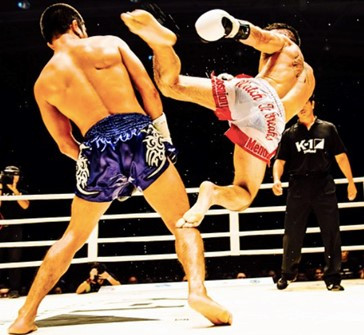MMA Concepts: The complete fighter

Within the world of mixed martial arts, most fighters and commentors agree that jiu-jitsu is the best ground fighting technique, especially in a street fight. If you have a solid background in jiu-jitsu, and your opponent does not, they are going to struggle to control the pace of the fight or mount an effective attack if the fight goes to the ground.
Managing the Distance
This is not just because jiu-jitsu fighters know a lot of holds and bars. It’s also because one of the core principles of jiu-jitsu is managing the distance. This means keeping a safe distance between you and your opponent by either staying well out of range of a strike or being so close to your opponent that they can’t create enough force for their strikes to seriously hurt you. This is known as all the way in or all the way out.
As Rener and Ryron Gracie explore in the below clip, this is a question of physics. If your upper arm and forearm are pinned down, this means you can only derive power from your wrist. You’re not going to be able to do a lot of damage. As you gain access to the rest of the muscles in your arm, the muscles in your torso, and the muscles in your legs, that gives you more power and more of an ability to gather momentum when you throw a punch or kick. As anyone who has played baseball or golf knows, most of the power to drive the ball does not come from the arms. In the immortal words of Chubbs Peterson from the movie Happy Gilmore, “It’s all in the hips.”
By taking the fight to the ground, jiu-jitsu fighters take away that power, and then use their knowledge of holds and bars to subdue their opponents.
Striking Distance

Though a lot of street fights end up on the ground, not all of them do. There are situations where the fight is decided while standing and with strikes, which means that any self-defense program is going to be incomplete unless you know how to strike and how to evade an opponent’s strike. Since jiu-jitsu typically places less emphasis on teaching how to strike, many students supplement their jiu-jitsu training by learning other forms of martial arts where striking plays a more central role.
Some of the most well-known martial arts in the world are striking martial arts. These include boxing, kickboxing, taekwondo, kung fu, karate, and Muay Thai, among others. Each one of these martial arts will teach you to strike and will make you a more effective fighter.
However, according to coach Firas Zahabi in the below clip, the most effective striking martial art to learn is Muay Thai. His reasoning is that virtually all striking martial arts will teach you how to punch, kick, sweep, throw, and block, but that there is relatively little focus on close-up fighting, which means fighters never realize the full potential of elbow and knee strikes.
Karate, for example, is a martial art that is exceptionally graceful and effective at long and medium range. Karate also relies on a lot of footwork to avoid your opponent’s attack and quickly respond with a counterattack. This is why so many fighters who have a strong background in karate do so well in the octagon; there is a lot of space. However, if you place that same fighter in the ring, where there is significantly less space, they tend to not perform as well.
Muay Thai, on the other hand, is known as the “art of the eight limbs” because it teaches students how to strike with their two shins, two knees, two fists, and two elbows, thereby allowing fighters the ability to be dangerous at any distance. Kicks cover the long range. Punches cover medium range. Knees cover short range. Elbows are for when you are in extremely close range.
A Complete Fighter
For those who want to be able to defend themselves in any scenario, there are few MMA combinations more effective than Muay Thai and jiu-jitsu. If you are comfortable striking with all “eight limbs,” then there is no distance from which your opponent ever has an advantage while you are both on your feet. If you then combine those striking techniques with the ability to control the fight from the ground with jiu-jitsu, then you can both prevent your opponent from landing a strike that seriously hurts you and put them in a hold that ends the fight and allows everyone to walk away.


